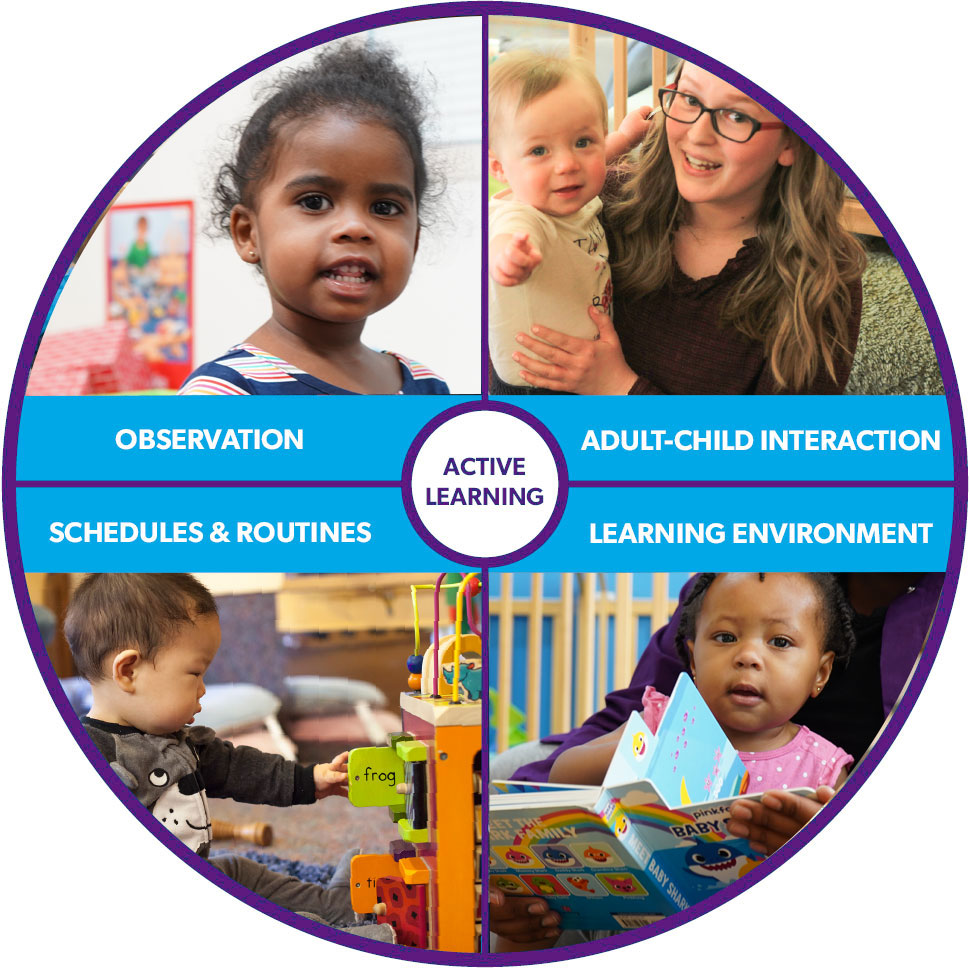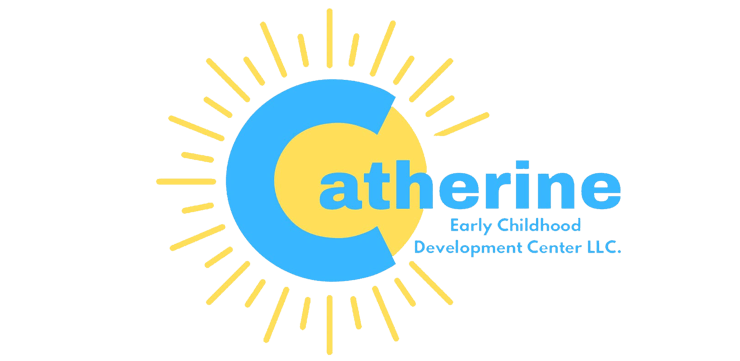HighScope Curriculum
The HighScope Curriculum is uniquely designed to provide a rich academic foundation while promoting independence, decision making, cooperation, creativity, and problem solving in young children. How? The HighScope Curriculum includes learning objectives, effective adult interaction strategies, and assessment measures that help programs ensure a high-quality experience for all learners.
Working in Partnership
Teachers using the HighScope Curriculum work in partnership with parents and other family members to promote children’s learning. They provide information about the curriculum and early learning, invite family members to participate in classroom activities and parent workshops, discuss children’s progress, and share ideas for extending classroom learning in the home. As a result, teachers report that parents have a better understanding of how their children are developing and learning.
HighScope’s early childhood curriculum promotes children’s development and learning and provides lasting benefits into adulthood.
Your youngest learners need to feel safe and supported so they can learn with their whole body and all of their senses. In a HighScope infant and toddler program, teachers focus on developing supportive, trusting relationships with the children in their care. We create rich environments that encourage very young children to explore and discover the world around them, helping them to engage in experiences designed to support their optimal development in all domains.
At HighScope we value and respect parents as their children’s first teachers. That’s why we encourage teachers to partner with parents in learning everything they can about their infants and toddlers to better care for their needs and plan for their development. As a result, our programs create a strong three-way bond between child, parent, and caregiver.
Active learning is at the center of the HighScope Curriculum. It’s the foundation where young children gain knowledge through their natural play and interactions with the environment, events, and other people.

Adult-Child Interaction
Nurturing, responsive teachers practice primary caregiving and continuity of care by scaffolding the individual needs and temperaments of infants and toddlers. Key strategies for adult-child interactions are touching, holding, playing alongside infants and toddlers at their level and pace, communicating in give-and-take exchanges verbally and nonverbally, respecting children’s choices and encouraging their efforts, acknowledging children’s strong emotions, and involving toddlers in resolving conflicts.
Learning Environment
The physical space is safe, flexible, and child oriented to provide comfort and accommodate the changing developmental needs and interests of the earliest learners. The space is organized into play and care areas that serve the needs of infants and toddlers and stocked with a variety of sensory-motor materials that infants and toddlers can reach, explore, and play with in their own way at their own pace. With nurturing and responsive caregivers as a home base, infants and toddlers are free to move about, explore materials, exercise creativity, and solve problems.
Schedules and Routines
A consistent yet flexible routine that accommodates individual children’s natural rhythms and temperaments gives infants and toddlers a sense of security and stability that creates trust between the child and teacher and builds independence as children engage with their environment and the people around them. Each routine is built around daily events and caregiving routines that value infants’ and toddlers’ active learning.
Observation
Ongoing child and program assessment is an underlying component of the HighScope Curriculum. Objective observations of children allow teachers to intentionally plan to build on individual and group interests and scaffold development by supporting what children know while gently extending their learning.
Grounded in current child development theory and research, the HighScope Infant-Toddler Curriculum is evidence-based. Our framework for understanding and supporting infants’ and toddlers’ learning from birth to age three is based on 42 key developmental indicators (KDIs) which align with national and state early learning guidelines and the Head Start Early Learning Outcomes Framework.
In the HighScope Infant-Toddler Curriculum, learning is focused on these six content areas:
- Approaches to Learning
- Social and Emotional Development
- Physical Development and Health
- Communication, Language, and Literacy
- Cognitive Development
- Creative Arts
Infant-Toddler Curriculum Content
Early learning and development in these six content areas is guided by 42 key developmental indicators (KDIs) — the skills and behaviors at each stage of development that pave the way for school and adult success. Each KDI is connected to and reinforced by scaffolding strategies to help teachers appropriately support and gently extend children’s learning.
The HighScope key developmental indicators
- Provide teachers with a child development “filter” for observing and choosing appropriate interactions and activities
- Help teachers interpret what young children say and do along a developmental continuum
- Enable teachers to maintain reasonable expectations for young children
- Reinforce children’s play as the primary mechanism for learning
- Allow teachers to be more knowledgeable and intentional in their daily planning for individual children and the class
